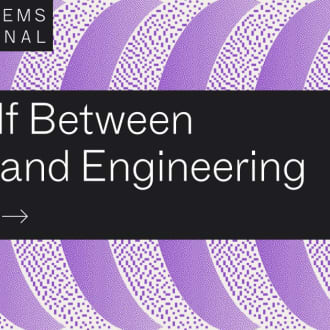What is information architecture? Structuring content for maximum value
Information architecture ensures content and data is structured, organized, and categorized in an effective and usable way, thereby maximizing the value of your websites and applications.
More from CIO.com
Best practices to embrace an ‘MLOps’ mindset
Most AI projects do not make it to production due to a communications gap. MLOps can help close the gap.
Tactical vs. Transformative: The Changing Role of Artificial Intelligence in Digital Transformation
Transformative AI initiatives can change how businesses run, shape, and grow uncovering new possibilities, and making AI different from other technologies enabling digital transformation.
The state of digital transformation in 2020
The lessons learned from a decade of digital transformation provide a roadmap for those embarking on their own initiatives. CIO, Computerworld, CSO, InfoWorld, and Network World team up to dissect…
The State of Artificial Intelligence at the Manufacturing Edge
Setting the bar for edge manufacturing innovation
Are Zombie Bots Killing Your RPA ROI?
Learn how to spot them, fix the issue, and maximize your RPA investment.
What is Refind?
Every day Refind picks the most relevant links from around the web for you. Picking only a handful of links means focusing on what’s relevant and useful. We favor timeless pieces—links with long shelf-lives, articles that are still relevant one month, one year, or even ten years from now. These lists of the best resources on any topic are the result of years of careful curation.
How does Refind curate?
It’s a mix of human and algorithmic curation, following a number of steps:
- We monitor 10k+ sources and 1k+ thought leaders on hundreds of topics—publications, blogs, news sites, newsletters, Substack, Medium, Twitter, etc.
- In addition, our users save links from around the web using our Save buttons and our extensions.
- Our algorithm processes 100k+ new links every day and uses external signals to find the most relevant ones, focusing on timeless pieces.
- Our community of active users gets the most relevant links every day, tailored to their interests. They provide feedback via implicit and explicit signals: open, read, listen, share, mark as read, read later, «More/less like this», etc.
- Our algorithm uses these internal signals to refine the selection.
- In addition, we have expert curators who manually curate niche topics.
The result: lists of the best and most useful articles on hundreds of topics.
How does Refind detect «timeless» pieces?
We focus on pieces with long shelf-lives—not news. We determine «timelessness» via a number of metrics, for example, the consumption pattern of links over time.
How many sources does Refind monitor?
We monitor 10k+ content sources on hundreds of topics—publications, blogs, news sites, newsletters, Substack, Medium, Twitter, etc.
Can I submit a link?
Indirectly, by using Refind and saving links from outside (e.g., via our extensions).
How can I report a problem?
When you’re logged-in, you can flag any link via the «More» (...) menu. You can also report problems via email to hello@refind.com
Who uses Refind?
450k+ smart people start their day with Refind. To learn something new. To get inspired. To move forward. Our apps have a 4.9/5 rating.
Is Refind free?
Yes, it’s free!
How can I sign up?
Head over to our homepage and sign up by email or with your Twitter or Google account.









